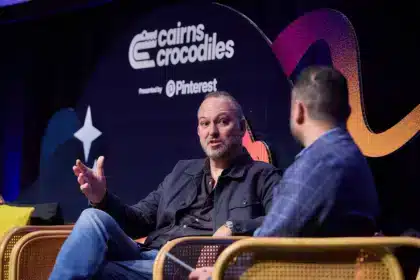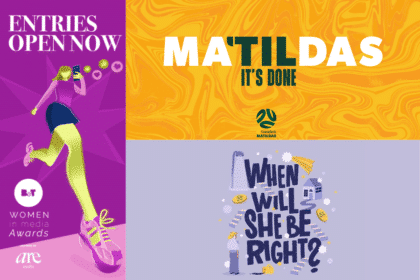Psyched’ is your monthly insight into the psychology and social science that guide our everyday choices. Authored by Summer Treseder, a strategist at Wavemaker, ‘Psyched’ unpacks the ‘why’ behind consumer choices with each edition delving into a provocative topic. From exploring ‘the rational reasons why Karens exist,’ dissecting ‘why mascots matter’ to examining our obsession with ‘brand trainwrecks,’ no subject is off limits. Each issue equips marketers (and us ad folk) with deeper insights into consumers’ minds, creating more meaningful connections.
Dare Iced Coffee recently made a big mistake, telling hundreds of competition entrants they’d won $1,000. The backlash that followed got me thinking: why are we so fascinated with brand disasters?
Much like the bottleneck traffic that forms after a car accident, we can’t help but slow down and watch. We know we shouldn’t… but we can’t help it.
Just look at Aussies content habits. From ‘red flag’ dating trends, and binge-worthy reality TV, to our fascination with brand PR disasters and celebrity breakdowns, we are a nation captivated by chaos so much so that 95 per cent of people follow news about celebrity scandals and PR disasters.
But why?
The glorification of troubled celebrities and companies has only increased with a rise in social media platforms democratising online review culture.
The anonymity, virality and instant gratification the internet provides have bred a culture where people’s misfortunes aren’t only viewed but are actively celebrated and shared.
Exacerbating this is the power imbalance consumers feel with big corporates. Despite loving some brands, consumers inherently know they are being influenced. So, when big brands stuff up, it’s reassuring that even Goliaths make mistakes.
Psychologists refer to this as: ‘Schadenfreude’, a German theory translating to ‘harm-joy’, or the pleasure derived from others’ misfortune.
This reaction is linked to social comparison theory, which suggests that we often measure our own self-worth by comparing how we ‘stack up’ against others. Therefore, when we see brands or public figures fail, it can give us a sense of superiority or self-worth. Take Prince Harry and Meghan Markle’s royal struggles as an example—the couple we love to hate.
The power to overcome being a victim of ‘Schadenfreude’ lies in the brand’s response. Examples of brands who have gone on to mishandle their mistakes include Woolworths’ vague responses to price-gouging claims, Burger King’s clickbait International Women’s Day tweet (see below), and a United Airlines’ passenger incident, where the CEO’s initial blame on the passenger worsened public backlash.
On a more positive note, social identity theory suggests that sharing brand trainwrecks fosters feelings of belonging in social groups, something which social media has proliferated. And whilst socials increase the risk of negative commentary, they also allow for quick brand responses – turning missteps into moments of opportunity.
Take the below McDonald’s and Lidl posts as examples, what started as a mistake, later turned into an opportunity to humanise the brand. Another oldie but a goodie is Coke’s relaunch of ‘Mother,’ using long-form video to humorously “bash” the old product team, with OTT scenes of them being “hunted down” for the failed original version, effectively owning the past misstep and rebuilding trust. This resulted in a massive x5 the projected volume with +900 per cent ROI according to WARC.
When you tweet before your first cup of McCafé… Nothing comes before coffee. pic.twitter.com/aPJ2ZupS9b
— McDonald’s Corporation (@McDonaldsCorp) November 24, 2017
The reason behind these redemptions is best explained through The Pratfall Effect, a cognitive bias that explains that people, and brands, who show flaws and vulnerabilities are more likely to be perceived as likeable and relatable as it humanises them.
Dear men of Ireland,
We would like to confirm that this was a typo in our newsletter, please DO NOT go to work in just these.
Thanks,
Lidl pic.twitter.com/GaXjUpPiyp— Lidl Ireland (@lidl_ireland) August 10, 2017
Some brands, such as Starbucks, even do it on purpose, ‘mistakenly’ misspelling thousands of names to drive earned media as people share these fails.
At the end of the day, brands are inevitably going to make mistakes – after all, we’re only human. How a brand reacts to these missteps can make all the difference. So, when it comes to brand blunders, consider these strategies:
Own It
Catch errors early and control the narrative to avoid the spread of misinformation and the escalation of negative commentary.
Accept fault where it’s due – there is nothing worse than brands that play the victim or shift blame when it’s at fault.
Use mistakes as an opportunity to humanise the brand by finding ways to engage your audience in the solution.
A great example of a brand that successfully achieves this is Skittles in their ‘Apologise the Rainbow’ campaign. This campaign was created in response to consumer backlash after Skittles replaced Lime Skittles with Green Apple. The brand held a live apology press conference, acknowledging the complaints and announcing the return of Lime Skittles alongside the free product.
Overcorrect with Intent
In a crisis, overcorrecting can be the most effective strategy, even if it feels uncomfortable.
Scott Galloway argues that decisive action, even if seemingly disproportionate, is crucial because waiting for the full problem to unfold is too late.
Crisis management demands speed over perfection, and brands that overcome the fear of mistakes are best positioned to rebuild trust and showcase commitment, even if it means being seen as overreacting.
Learn from mistakes
Conduct a post-mortem report to identify causes, update processes to reduce the likelihood of repeated mistakes and foster a culture where learning from mistakes is encouraged.
Equally important is learning from others to avoid repeating their errors. One of, if not the most reoccurring brand mistakes is cultural insensitivity and mistranslation, which can alienate audiences. According to recent research from RWS, 86 per cent of native speakers have encountered culturally inappropriate content caused by mistranslation.
This issue is nothing new. For example, when KFC first entered the Chinese market in the 1980s, their famous slogan, ‘It’s finger-lickin’ good,’ was mistranslated as “Eat your fingers off.” To avoid this, brands should invest in cultural research and ensure that global campaigns are reviewed and adapted based on local nuances.
With a world fascinated by brand trainwrecks, there is an opportunity to turn cringe-worthy moments and ick-inducing issues into opportunities to humanise a brand and grow trust amongst audiences. So, own your mistakes, overcorrect with intent, and learn for the future.









